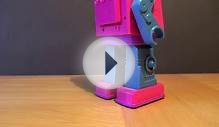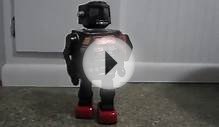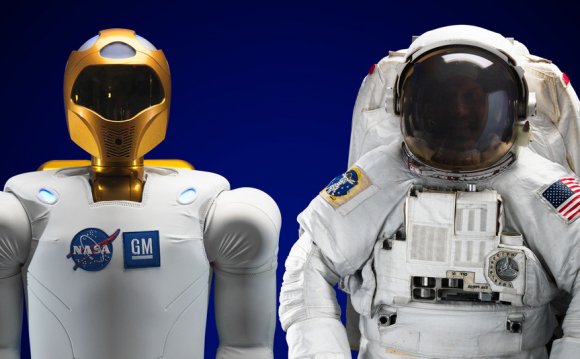
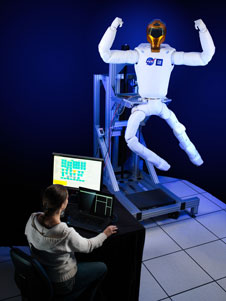 Robonaut 2 Getting His Space Legs
Robonaut 2 Getting His Space Legs
NASA engineers have developed climbing legs for the International Space Station's robotic crew member Robonaut 2 (R2), marking another milestone in space humanoid robotics.
|
NASA’s Robonaut 2 with the newly developed climbing legs, designed to give the robot mobility in zero gravity. With legs, R2 will be able to assist astronauts with both hands while keeping at least one leg anchored to the station structure at all times. Image credit: NASA › View more images |
|
NASA’s Robonaut 2 with the newly developed climbing legs, designed to give the robot mobility in zero gravity. With legs, R2 will be able to assist astronauts with both hands while keeping at least one leg anchored to the station structure at all times. › View more images |
R2, is attached to a support post, and undergoing experimental trials with astronauts aboard the orbiting laboratory. Since its arrival at the station in February 2011, R2 has performed a series of tasks to demonstrate its functionality in microgravity.
These new legs, funded by NASA’s Human Exploration and Operations and Space Technology mission directorates, will provide R2 the mobility it needs to help with regular and repetitive tasks inside and outside the space station. The goal is to free up the crew for more critical work, including scientific research.
"NASA has explored with robots for more than a decade, from the stalwart rovers on Mars to R2 on the station, " said Michael Gazarik, NASA's associate administrator for space technology in Washington. "Our investment in robotic technology development is helping us to bolster productivity by applying robotics technology and devices to fortify and enhance individual human capabilities, performance and safety in space."
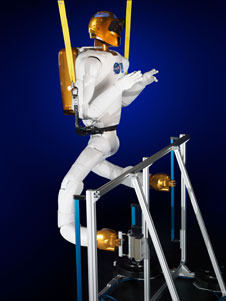 When the legs were attached to the torso, R2 has a fully extended leg span of 9 feet, giving it great flexibility for movement around the space station. Each leg has seven joints and a device on what would be the feet called an end effector, which allow the robot to take advantage of handrails and sockets inside and outside the station. A vision system for the end effectors will be used to verify and eventually automate each limb's approach and grasp.
When the legs were attached to the torso, R2 has a fully extended leg span of 9 feet, giving it great flexibility for movement around the space station. Each leg has seven joints and a device on what would be the feet called an end effector, which allow the robot to take advantage of handrails and sockets inside and outside the station. A vision system for the end effectors will be used to verify and eventually automate each limb's approach and grasp.
NASA engineers built the legs and they were installed on R2 by station astronauts in August 2014. The new legs are designed for work both inside and outside the station, but upgrades to R2's upper body will be necessary before it can begin work outside the space station. Those upgrades are scheduled to take place in fall and winter 2014.
Technologies developed for Robonaut have led to new robotic devices for future spaceflight that also have direct applications here on Earth. For example, NASA is developing a robotic exoskeleton that could help astronauts stay healthier in space and also aid people with physical disabilities.
The International Space Station serves as a test bed for future technologies that will be vital to human exploration as NASA explores asteroids and Mars. NASA's Space Technology Program is innovating, developing, testing and flying hardware for use in NASA's future missions.
RELATED VIDEO

